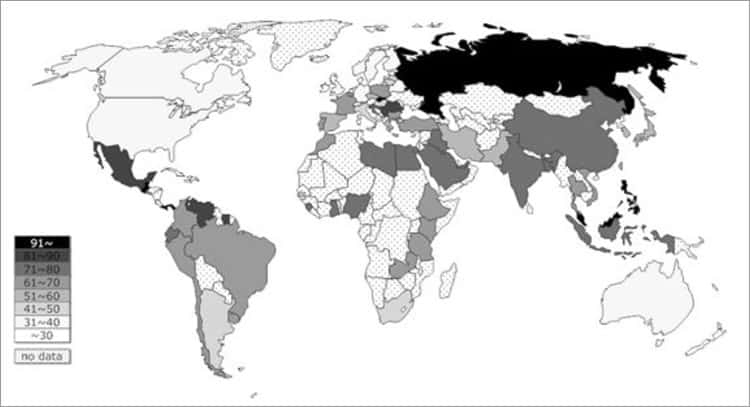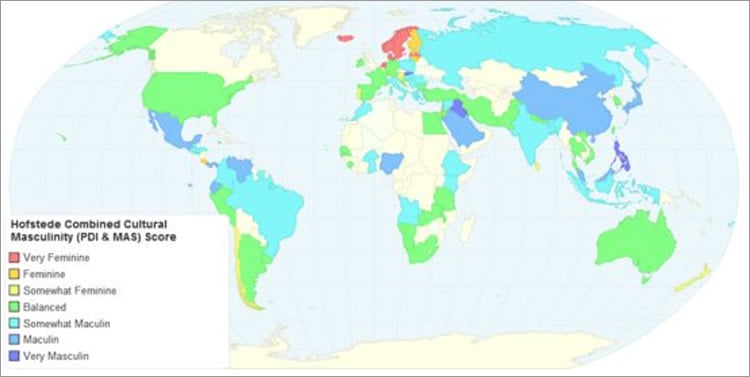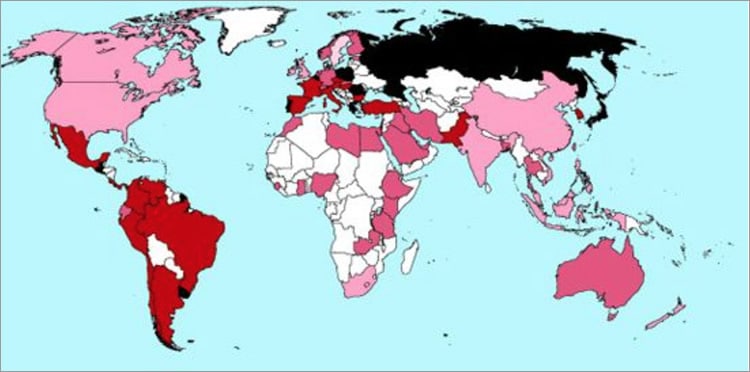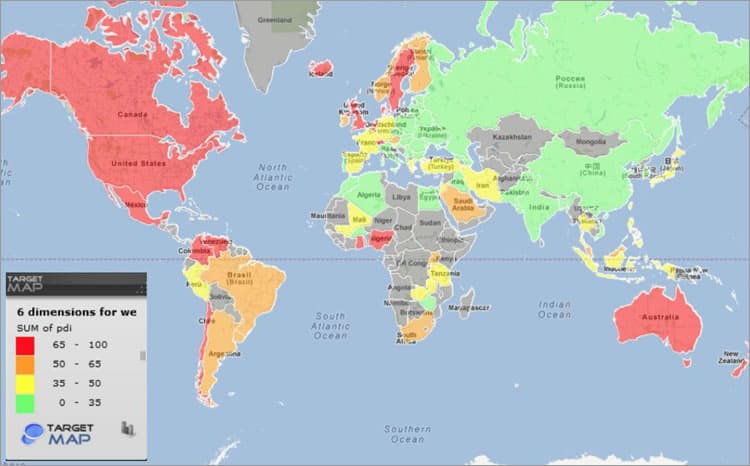
UX Designers — know this: culture affects an individual’s perception of usability. As obvious as it may seem, many UX Designers fall victim to the impression that users are culturally homogenous (from the same background). Such an assumption can prove to be detrimental to the success of even the most effective UX Design efforts.
Understanding this concept may require UX Designers to take a step back and reevaluate what makes a product or design usable. Contemporary and generally accepted practices, as they are taught in the United States, may not be applicable in other countries. This is due to the effect of culture on the perception of usability.
Designing with Culture in Mind
Geert Hofstede, Professor Emeritus of Organizational Anthropology and International Management at Maastricht University in the Netherlands, conducted a comprehensive study on the ways in which values in the workplace are influenced by differences among cultures.
Hofstede determined six “dimensions of national culture” which drive differences in cross-cultural sensitivity to similar stimuli. Hofstede’s findings ought to be used as a tool to aid in designing the most culturally optimized and specific User Experience possible.
1. Power Distance Index (PDI)

Hofstede’s first cultural dimension: PDI, quantifies the relative degree to which social inequality is perceived across a societal spectrum—and especially by those that may represent the lower end of the distribution.
People in societies exhibiting a large degree of Power Distance accept a hierarchical order in which everybody has a place and which needs no further justification. In societies with low Power Distance, people strive to equalize the distribution of power and demand justification for inequalities of power (Source: The Hofstede Center).
UX Designers ought to keep in mind that people in societies with a small PDI do not take kindly to perceived authority and leadership. According to Hofstede’s findings, such users only accept leadership in cases where objectivity and abundant detail gives them the capacity to make up their own mind. Gaining trust among this group is simply a matter of informality, directness, and openness to participation.
Users belonging to cultures with a large PDI are not typically compelled by the notion of personal responsibility, and tend to respond well to direct guidance—i.e., information presented in a factual manner, and concise statements.
2. Individualism vs. Collectivism (IDV)

Hofstede’s second cultural dimension, IDV, describes the relative perception within a particular cultural group for an “I” or “we” mentality.
The high side of this dimension, called individualism, can be defined as a preference for a loosely-knit social framework in which individuals are expected to take care of only themselves. Its opposite, collectivism, represents a preference for a tightly-knit framework in society in which individuals can expect members of a particular in-group to look after them in exchange for unquestioning loyalty (Source: The Hofstede Center).
In UX Design, IDV is a useful metric from which one can deduce the proper way to contextualize site engagement—such as through call-to-actions (CTAs) and social media integration. Users from cultures that exhibit a high level of IDV want to know how a product or service will benefit them.
Users belonging to cultures that exhibit a low level of IDV are more interested in how a product or service will either a) benefit the cultural group as a whole, or b) reflect on them in the eyes of society.
3. Masculinity vs. Femininity (MAS)

The third cultural dimension, MAS, describes the expectations within a cultural group to place value on a particular set of ideals.
The Masculinity side of this dimension represents a preference in society for achievement, heroism, assertiveness and material rewards for success. Its opposite, Femininity, stands for a preference for cooperation, modesty, caring for the weak and quality of life (Source: The Hofstede Center).
UX Designers ought to use this cultural dimension when crafting the incentives with which a product or service will drive interaction or loyalty. Users belonging to a culture which places value in a high level of MAS are likely to respond well to User Experiences that offer significant rewards—whether monetary, or conceptual in nature.
Alternatively, users with cultural backgrounds which value a low level of MAS are likely to be drawn to UXs which impress upon the user that they are operating solely on the premise of an “all for one and one for all” mentality. A good example of this would be offering the user a chance to donate a nominal sum to charity during checkout.
4. Uncertainty Avoidance (UAI)

Hofstede’s fourth cultural dimension, UAI, reflects the degree to which a particular culture tolerates new ideas and behavior.
Countries exhibiting strong UAI maintain rigid codes of belief and behavior and are intolerant of unorthodox behavior and ideas. Weak UAI societies maintain a more relaxed attitude in which practice counts more than principles (Source: The Hofstede Center).
UAI ought to be among the primary considerations among UX Designers that know their product or service will be used by populations outside his/her culture. Users belonging to a culture with a strong UAI are less likely to respond well to cutting edge designs and new-age ideals, such as prevalent nudity and use of foul or informal language.
Users belonging to a culture with a weak UAI tend to be significantly more progressive in their adoption of the latest design trends and social conventions.
5. Long-Term vs. Short-Term Normative Orientation (LTO)

Hofstede’s fifth cultural dimension, LTO, describes the relative ease with which a particular culture adopts social and normative changes.
Societies who score low on this dimension prefer to maintain time-honored traditions and norms while viewing societal change with suspicion. Those with a culture which scores high, on the other hand, take a more pragmatic approach: they encourage thrift and efforts in modern education as a way to prepare for the future (Source: The Hofstede Center)
UX Designers ought to keep in mind that individuals belonging to societies which rank low on the LTO scale are conservative, and not likely to respond well to User Experiences which reflect agents of social change. An excellent example in the United States is same-sex marriage. Conservative members of society are likely to be repelled by products or services which claim to support “gay marriage”.
6. Indulgence vs. Constraint (IND)

Hofstede’s sixth cultural dimension, IND, represents the likelihood of a particular cultural group to be receptive to things like the uninhibited gratification of basic needs.
Indulgence stands for a society that allows relatively free gratification of basic and natural human drives related to enjoying life and having fun. Restraint stands for a society that suppresses gratification of needs and regulates it by means of strict social norms (Source: The Hofstede Center)
UX Designers ought to keep in mind that cultures which rank high on the IND scale will not be offended by the notion that they ought to indulge in more. More food items, more color options, more modes of operation, etc.
Cultures which rank low on the IND scale are not likely to respond well to an abundance of options—this can often be perceived fearfully, especially in countries where socialism is the dominant social movement.
Use this Information on Every Project
Hofstede’s dimensions of national cultural can be used to bridge the gap between culture and User Experience by changing the way visual elements, navigation, and information are designed. By designing contextually, UX Designers can rest assured that they are not alienating any major audiences. Use this tool to help you determine specific cultural dimension rankings by country.
While the metrics listed here can be quantified in a sense, this information can only be used meaningfully by comparison, as we are all human, and inherently unique. Those wishing to develop a deeper understand of the cultural dynamics which determine usability across cultures ought to check out some of Hofstede’s works.
Want to learn more?
Want to get an industry-recognized Course Certificate in UX Design, Design Thinking, UI Design, or another related design topic? Online UX courses from the Interaction Design Foundation can provide you with industry-relevant skills to advance your UX career. For example, Design Thinking, Become a UX Designer from Scratch, Conducting Usability Testing or User Research – Methods and Best Practices are some of the most popular courses. Good luck on your learning journey!
(Lead image: Depositphotos)
